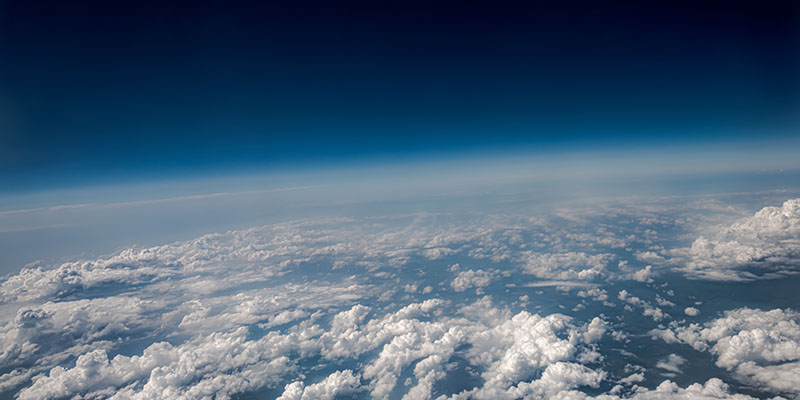The International Day for the Preservation of the Ozone Layer is observed on September 16th. This day is significant because it recalls the Montreal Protocol, a large agreement reached 35 years ago to help maintain our ozone layer. You may wonder what the ozone layer is and why it is so important.
What is the Ozone Layer?
Think of the Earth’s atmosphere as a layer cake. The troposphere is where we live and breathe. Above that is the stratosphere, which ranges in altitude from about 6 miles to 31 miles (you get the idea. Mount Everest is 5.5 miles high). But what is special about the stratosphere is the ozone layer, which is like Earth’s very own sunscreen.
Why Is the Ozone Layer Important?
The ozone layer is composed of ozone molecules, each of which contains three oxygen atoms. It acts as a protection, particularly against the sun’s harmful UV radiation, particularly UVB wavelengths. These rays can cause skin damage, eye difficulties, crop damage, and devastation to our oceans.
The Montreal Protocol: An Environmental Success on a Global Scale
Established in 1987 and officially implemented in 1989, the Montreal Protocol is a shining example of how countries may collaborate to solve major environmental issues. It was created to prevent hazardous compounds known as ozone-depleting substances (ODSs), such as CFCs and halons, from damaging our atmosphere’s protective ozone layer. And it worked extremely well: nearly 99% of these toxic compounds have now been removed, allowing the ozone layer to heal.
Remarkable Climate Assistance
However, the Montreal Protocol did more than save the ozone layer; it also had an unexpected role in reducing climate change. Between 1990 and 2010, it averted approximately 135 billion tonnes of carbon dioxide from entering the atmosphere by lowering ODSs. This is significant because carbon dioxide is a significant contribution to climate change. It demonstrates how interconnected environmental challenges are and how effective global cooperation can be.
Kigali Amendment
The Kigali Amendment to the Montreal Protocol was adopted in 2016. It is now also combating hydrofluorocarbons (HFCs). These chemicals were intended to be ODS substitutes, but they turned out to be significant contributors to global warming. The Kigali Amendment is like an upgrade, and it can potentially reduce global warming by 0.4 degrees Celsius by 2100.
Benefits Other Than the Environment
People gain from the Montreal Protocol and the Kigali Amendment as well. They could save millions of cases of skin cancer by maintaining the ozone layer by 2030. Furthermore, they could save $1.8 trillion in healthcare expenses, primarily from treating skin cancer. It benefits both our health and our money.
Sustainable Planet
As we celebrate these accomplishments, remember that the Montreal Protocol’s success is about more than just safeguarding the ozone layer. It’s a shining example of how enormous problems can be addressed when countries work together, giving our planet hope for a better, more sustainable future.
Sources
Montreal Protocol, United nations



